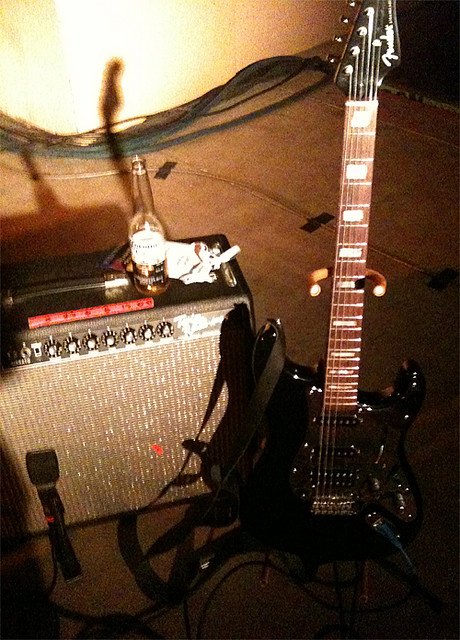One has bought the acoustic guitar, played the beginning tunes, felt the muse sit within them, and approve of every loving caress strummed across its six strings. The decision is made; one is going to do this, and like a lover will explore every nuance and inch of their guitar. It begins like all lovers with the exploration of the anatomy.
Names are given to every part of the guitar, and when taking lessons with music instructors or professional musicians they will use those terms.

Head
The head holds the tuning pegs and keys. The keys loosen and tighten the strings. Humidity, heat, and the amount of playing all effect the sound of the instrument. Guitars need regular tuning like a lover needs regular sessions of tender loving care.
Nut
The nut divides the head from the neck. It functions as a small bridge as well. The strings sit on top of the bridge, and it raises them slightly off the neck letting maximum vibrations occur.
Frets
The neck of the guitar has even increments of fret bars. Fret bars are made of metal. The pressing of the string by your fingers, and the touching to the fret bar makes the guitar talk and sing the melodic melodies people love to hear. Also fret bars function as a reference for a guitarist. Eventually when one plays enough your hand knows where it is because of the fret bars. Much like a long term relationship, one knows what to do in which position to make for the maximum sound. Moving up each fret moves the sound by half step increments making for a chromatic scale.
Neck
The long shaft lies between the head and body of the guitar. The part closest the frets is a flat plain made perfect for the touch of fingers in numerous ways to make sound. The back of the shaft comes curved. A guitarist’s thumb plays here. It is the place where a small push starting in the palm of the hand gives the necessary pressure to take the sound where the song needs to go.
Heel
On the backside of the neck shaft where it connects to the guitar the neck juts out. This gives added strength to the shaft and keeps the pressure from forming the chords, and the play of the thumb from overcoming the attachment between head and body. Without it, the neck would come undone from the guitar.
Body and Ribs
The whole bottom part of the guitar comes shaped like a voluptuous female, and has differing names on its surface, side and back. The shape makes for maximum sound vibrations of great quality. The top where the playing occurs named the sound board gives the acoustic tonal quality. The sides are sometimes known as the ribs. Ribs take most of the compressive force from the strings. The curving makes for added stiffness, and makes the sound move out front of a guitar player instead of back into the player’s body. Some guitars have a sound plate which protects the wood from being scooped out after hours of play.
Sound Hole
Though the sound board (the whole top of the guitar) makes the sound vibrations for the song, the sound hole adds to this by resonating and directing the sound forward. Looking inside the guitar through the sound hole one will see the bracing patterns. Bracing patterns add to the tonal quality of the guitar. It makes sure tonal quality is maintained from the bass register to the soprano register on the instrument.
Saddle or Bridge
The portion of the guitar made so the strings anchor comes as a shapely piece of wood. Strings anchor in several ways. Some guitars have holes that strings are inserted through and tied. Some strings have a ring at the end. Other guitars have holes where strings are inserted, and a peg is inserted afterwards. Bridges raise the strings above the body and transfer vibrations to the sound boards.
Guitar construction for acoustics developed over the centuries by trial and error. As each component became developed it added to the good vibrations that are enjoyed by all today.
- License: Creative Commons image source
Justin Miller is a professional blogger that writes for Jamplay.com. JamPlay is a leading online music educator offering 2,000+ beginning guitar lessons in HD.